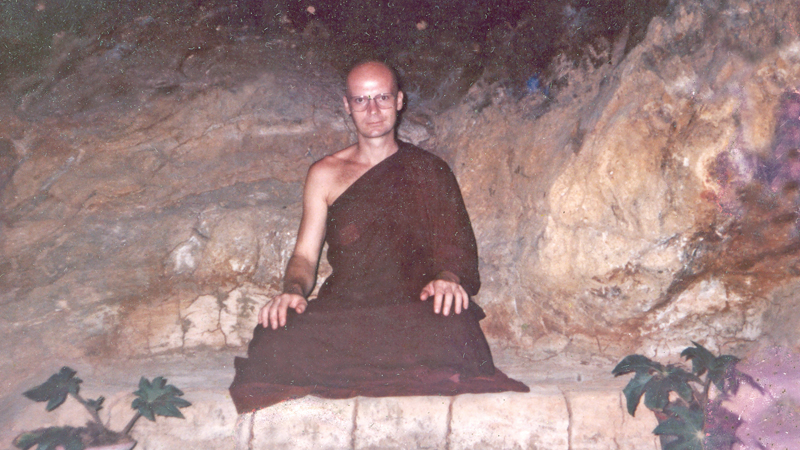Forest hermitages (aranyas) offer surroundings perfectly suited to the age-old practice of meditation for a contemplative community.
 Vesak Poya is of enormous spiritual significance for Buddhists world over to commemorate the Birth, Enlightenment, and Passing Away of the Buddha, the founder of Buddhism. Whether due to unusual coincidence or pious legend, all three of these cardinal anniversaries fall on the full-moon day of May.
Vesak Poya is of enormous spiritual significance for Buddhists world over to commemorate the Birth, Enlightenment, and Passing Away of the Buddha, the founder of Buddhism. Whether due to unusual coincidence or pious legend, all three of these cardinal anniversaries fall on the full-moon day of May.
While the feeling of seclusion and tranquility still exists in some parts of this island faced with modernity, I decided to take a glimpse of the hermitages (Aranya Senasanayas) that support a community of meditative bhikkhus.
Sri Lanka’s Buddhists follow the classic, historical Theravada teaching of Buddhism guided by monastic orders and the ancient Pali canon; the meditative practice varies from the simple to the profound. It is practised by all ordained bhikkhus to a greater or lesser degree, depending on the routine of each hermitage.
In Sri Lanka, there are many forest hermitages and meditation centres suitable for foreign Buddhist monastics or for experienced lay Buddhists. Factors such as climate, food, calmness, standards of monastic discipline (vinaya), dangerous animals and accessibility are considered in selecting locations for forest hermitages.
Hermitages in Western part
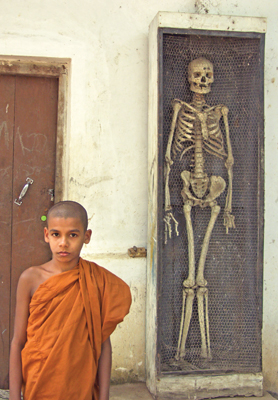
Most ancient hermitages have a real human skeleton placed in caves or a specially built structure for bhikkhus to practise mediation. This Samanera bhikkhu stands close to the skeleton at the Mawaragala forest hermitage in Dambana, Mahiyanganaya
The greatest concentration of forest hermitages is in the Western part of the country, especially in the Kurunegala, Colombo, Kalutara and Galle districts. There are very few active forest hermitages in the Northern and Eastern districts, although there are ruins of many ancient forest hermitages in these regions. Some of these hermitages are now being re-developed, most notably the Kudumbigala forest hermitage.
The standards of discipline (vinaya) vary from tradition to tradition, and from hermitage to hermitage. In Sri Lanka, there is not such a strong tradition of refined teacher and hermitage etiquette as there is in the Thai Forest traditions. The Galduwa Forest Tradition has the strictest vinaya tradition in Sri Lanka, and it also follows the commentarial interpretations strictly.
The Galduwa tradition is an independent part of the Ramanna Nikaya. The headquarters is in Galduwa, near Ambalangoda. It is the largest forest sect in Sri Lanka with emphasis on meditation practice. There are about 150 monasteries that follow this tradition. The bhikkhus are easily recognised by the habit of wearing the double robe whenever they go outside the hermitages.
The Vippassanadhura bhikkhus are mainly contemplative, in which Vippassana Bhavana or insight meditation is the dominant and central theme and experience. These contemplative communities live mostly in secluded woodland hermitage complexes (aranyas), in rock shelters, caves, cob huts or cells, collectively called kuti, which blend simplicity and serenity and provide a subdued but effective expression of the essence of Buddhism.
Meditation techniques
Meditation employs many techniques and subjects. One of the most widely used is Anapanasati, the concentration on rhythmic inhalation and exhalation (breath). Though not mandatory, stylised traditional practices are often used in meditation as they lend rhythm and form to the routines. These include sitting in cross-legged posture and walking with a slow measured tread.
However, it is not an exaggeration that Buddhism is always associated with Nature: trees, mountains and streams. Some forest reserves in the country have been protected due to Buddhist hermitages which are located inside these forests. Thus, the essential spirit of seclusion and solitude of hermitage life is preserved while protecting forest reserves.
The tradition of secluded contemplative hermitages goes back to the pre-Christian beginnings of Buddhism in Sri Lanka. At Arankele, Ritigala, Kudimbigala and a few reputed Buddhist hermitages around the country, rock shelters and a strikingly handsome meditative walkway (Sakman Maluwa) or dressed granite slabs, give a fascinating glimpse of an ancient contemplative life. It is rich in history and natural beauty with wooded forests. It has always remained one of my favourite photography destinations.
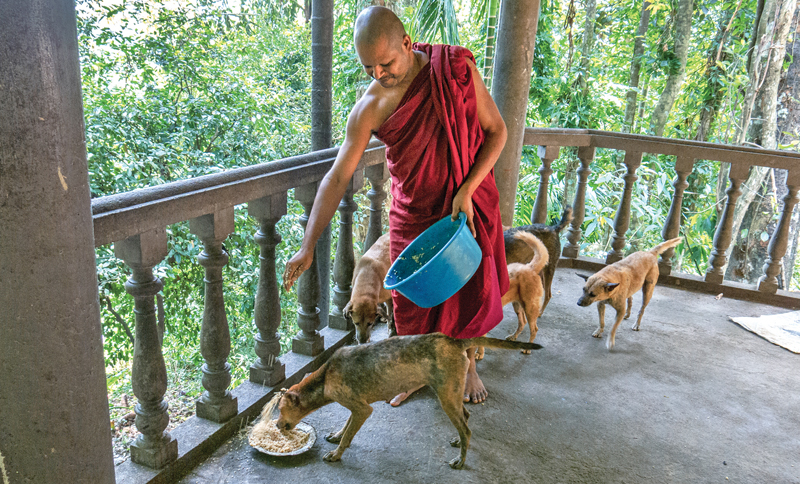
Feeding animals is a meritorious deed in every religion. This monastic bhikkhu who has been practising meditation at the Bodhinagala forest hermitage feeds dogs after his mid-day meal (dana) that is his daily routine
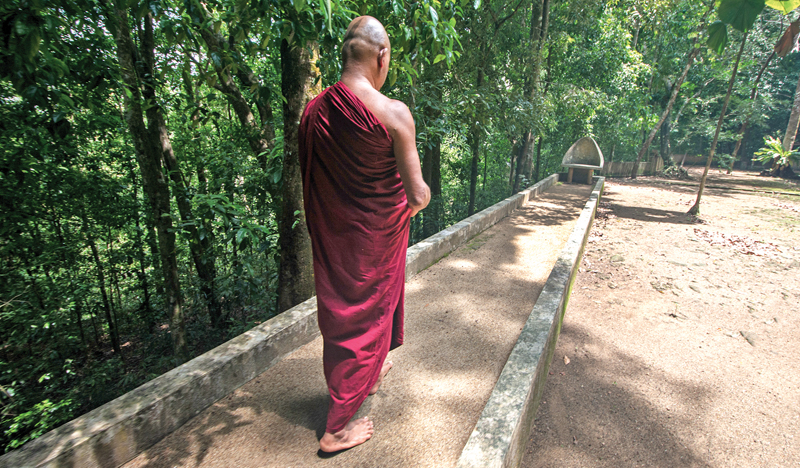
One posture of meditation is walking with a slow measured tread and chanting. Every forest hermitage has platforms for walking meditation. This bhikkhu is engaged in meditation on a paved walkway which winds through the trees at the Bodhinagala forest hermitage
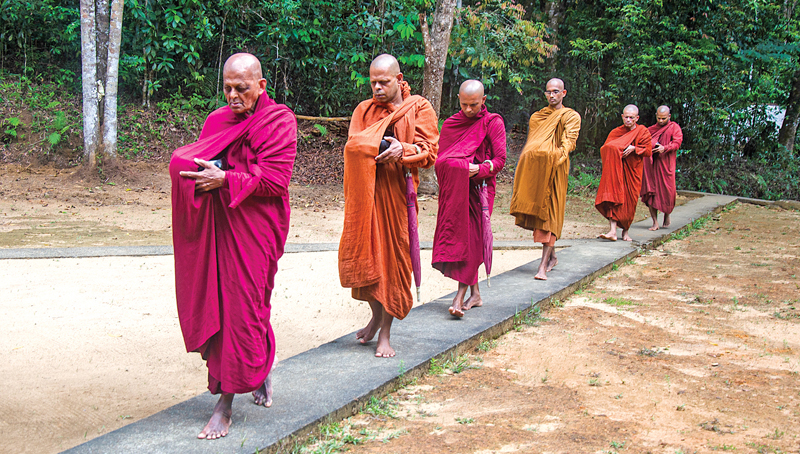
The two main meals at the hermitage – breakfast and lunch – are provided by alms donors; the bhikkhus receive food in their bowls and confer merit on the donors. These monastic bhikkhus are engaged in ‘Pindapatha’ at the Kalugala forest hermitage in Baduraliya





